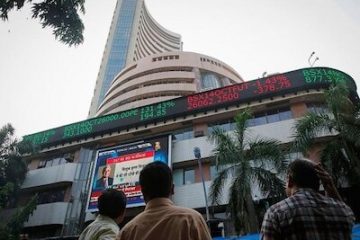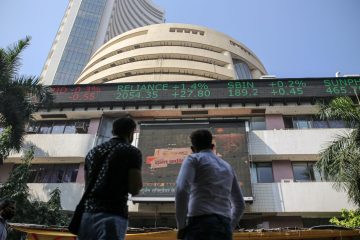The ongoing increase in bond yields in the US may result in further declines in the Indian equity market. Historically, there has been a negative correlation between equity valuations in India and US bond yields.
The yield on the 10-year US Treasury bond has surpassed 4.8 per cent, the highest level in over 16 years, and nearly 45 per cent higher than the 25-year average yield of 3.3 per cent.
In comparison, the current trailing price-to-earnings (P/E) multiple of the benchmark S&P BSE Sensex, at 24x, is nearly 20 per cent higher than the historical average.
A similar bond yield level was last observed in June 2007 when the Sensex was trading at a P/E of 20.7x, around 15 per cent lower than its current valuation.
The yield on the 10-year US Treasury bond spiked to 4.8 per cent on Tuesday, the highest since June 2007. With this increase, the benchmark bond yields in the world’s largest economy have risen by almost 100 basis points (bps) since the beginning of the current calendar year (2023).
Overall, US bond yields have more than trebled since the end of the 2021 calendar year. The US 10-year Treasury ended 2021 with a yield of 1.51 per cent, marking one of the most significant and quickest rises in US bond yields in the past 40 years. Previously, the yield on 10-year US Treasury bonds doubled in a span of three years between 1977 and 1980.
Historically, there is a negative correlation between the yield or interest rate on risk-free government bonds and the price of risky assets such as equities. Consequently, the recent rise in US bond yields has led to the repricing of equities. The US benchmark Dow Jones Industrial Average was down 1.3 per cent, or 431 points in Tuesday’s trading, wiping out all its gains for 2023.
The movement in the yield on US Treasury bonds affects the Indian equity market through foreign portfolio investment (FPI) in equities. When bond yields decline in the US, investment in Indian equities becomes more attractive, and FPIs become net buyers, leading to a rise in stock prices and an expansion in the market’s P/E multiple.
Conversely, when bond yields rise in the US, FPIs become net sellers and withdraw their capital, resulting in a decline in the Sensex P/E multiple.
For example, FPIs turned net sellers in September as US bond yields surged, leading to a broader market decline.
The Sensex is now down 2,600 points from its September highs, and the P/E multiple has contracted by 100 bps in the past month due to selling by FPIs. In total, the index’s trailing P/E has contracted by 400 bps since the end of December 2021, compared to a 330-bp rise in US bond yields.
One bp is one-hundredth of a per cent.
Many analysts foresee further downside for Indian equities, as the overall adjustment in the Indian market has been much less than the rise in US bond yields.
For instance, the Sensex P/E multiple has remained unchanged since the beginning of the 2023 calendar year, despite a 100-bp rise in US bond yields. Historically, adjustments in the Indian equity market have occurred with a lag compared to changes in the US bond market.
“Moderation in economic growth, potential earnings downgrades, moderation of return on equity, and a hardening of risk rates in India and the US pose risks to valuations for Indian benchmark equity indices,” says Dhananjay Sinha, head of research and equity strategy at Systematix Institutional Equities.
The continued surge in yields has also narrowed the spread between Sensex’s return on equity and the US 10-year bond yield to 10 per cent, the lowest in 27 months. This makes incremental investment in Indian equities less attractive for foreign investors.
Note:- (Not all news on the site expresses the point of view of the site, but we transmit this news automatically and translate it through programmatic technology on the site and not from a human editor. The content is auto-generated from a syndicated feed.))



